CADA C71004W Review, Specs & Price: Our favorite set is now available on Amazon for under €50 for the first time. You can get the mini solar system of earth, moon and sun with realistic planetary movement for €46.59 from Amazon.
It is even cheaper at AliExpress for €32.44. However, here it is shipped without the original packaging (to save on shipping, the seller then stuffs all bags of stones into a plain cardboard box).
The solar system from CADA C71004W is a completely different clamping block set than we are used to. The system of sun, earth and moon is reminiscent of a school science project, implements real, astronomical phenomena in a fairly detailed manner and also teaches children something. Everything can also be moved using a mechanical “crank”. Our experience report on one of the best clamping block sets that we have ever seen.
CADA C71004W Review, Specs & Price
- CaDA C71004W solar system
- at AliExpress for €32.44 | Amazon for €46.59 | CaDA for 55€ (Coupon: CADA5%CG)
- CaDA Master Series – More deserved than seldom
The set appears as part of CaDA’s “Master Series”. Here the MOCs (My Own Creation) are published by independent designers as an official set and the creator is always prominently referred to. However, we are used to big trucks and sports cars here.
The first set of the series was then the C61041 (the “Lamborghini”) ; other large sets followed (you can find all of them here in our themed world of clamping blocks). The last set in the series was the particularly complex V12 Hypercar with over 4,000 parts.

The CADA C71004W is special here in two ways. It has significantly fewer bricks than the other sets and costs a lot less too. For the big sports cars you had to pay up to 200€, here you have to pay a little over 50€ for the 865 parts. Also, it doesn’t fit into any of the previous “categories” at CaDA, where we mostly have cars, occasionally motorcycles or construction site vehicles, and rarely building sets. That’s why it stands out, of course. I can tell you: absolutely rightly so!
The packaging (& accessories)
Since this is a set that you can and will most likely give away to children, I want to go into the box and parts of the instructions in more detail. A gift should also look good, and especially when you order sets cheaper on AliExpress, the original box is often left out. Yes, I write that in almost every article, but please make everyone aware of it.
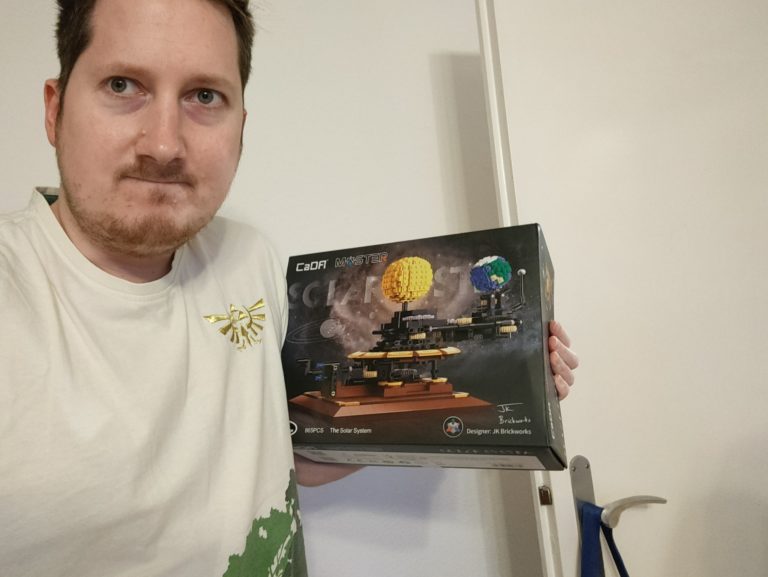
The box of the set has the same design as all in the Master Series. It is mostly black with the logo and designer’s name and signature on the front. There are also space nebulae, stars and planetary orbits, appropriate to the topic. The packaging is made of slightly thicker cardboard than usual and is correspondingly robust.
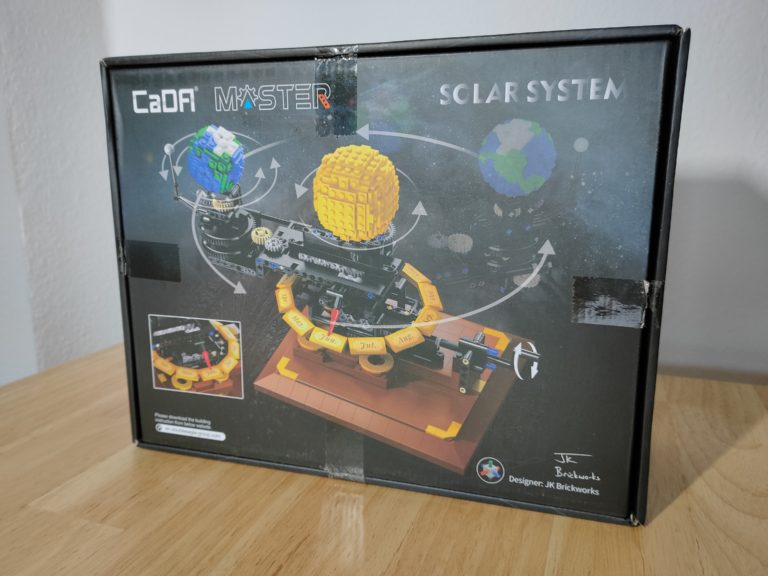
I especially liked the first few pages of the manual. Before you get to the actual structure, there is some information and “fun facts” about the three astronomical bodies , such as the surface temperature of the sun or its average distance from earth. This is how you combine play and science and arouse interest in astronomy. Small caveat at this point: the text is only available in Chinese and English.
- You May İnterested: CaDA Combination Safe C71006W
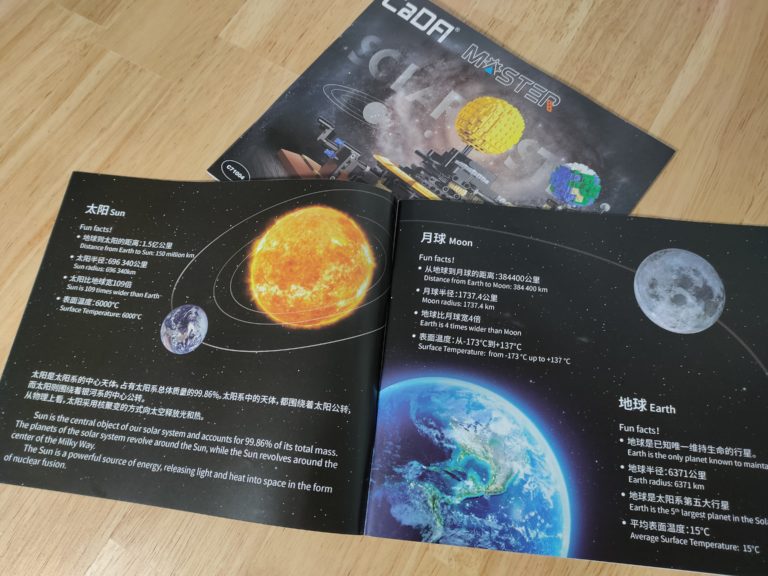
Structure – classic meets technology
Then the instructions start, which are divided into two sections (A and B), although B can certainly be divided into two subsections.
For section A you only need the parts of the two bags labeled “1”. Here you build the base on which the model will later stand in very simple steps. In principle, you just put panels together or on top of each other. It’s definitely the easiest part, although not all of the illustrations may be perfectly legible as 95% of all the parts here are the same shade of brown.
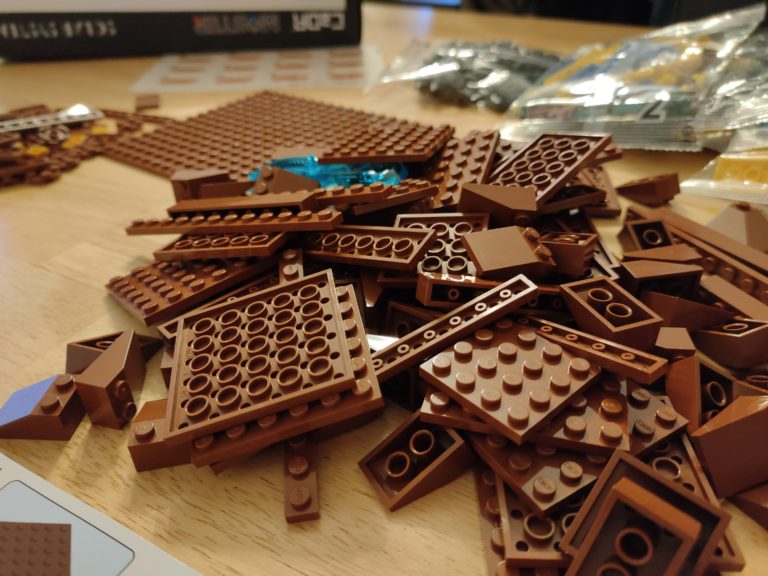
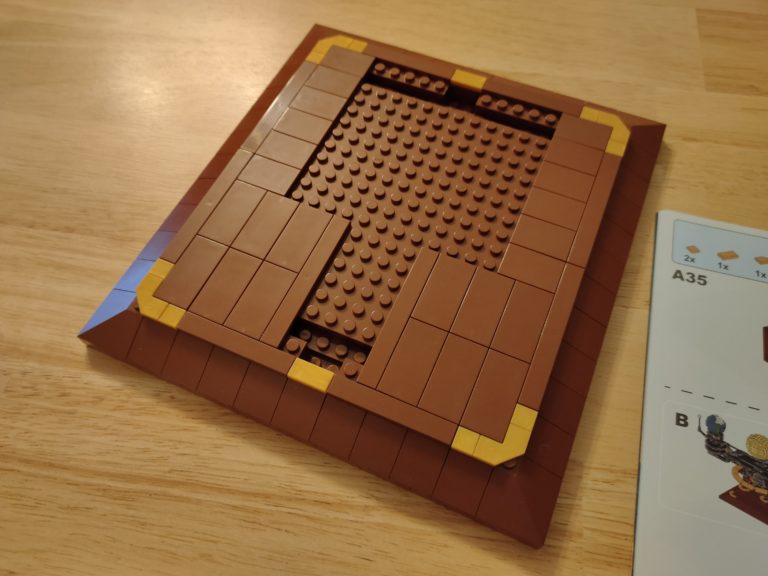
Section B then needs the remaining bags labeled “2” and “3”. Now you build the complete mechanics of the set and above all connect many gears with each other. Unlike in section A, technology stones are now used almost exclusively and the level of difficulty increases somewhat.
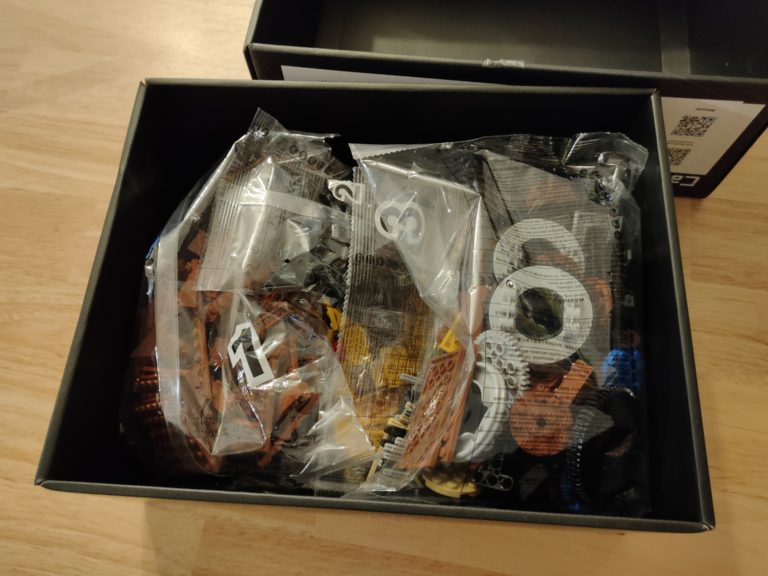
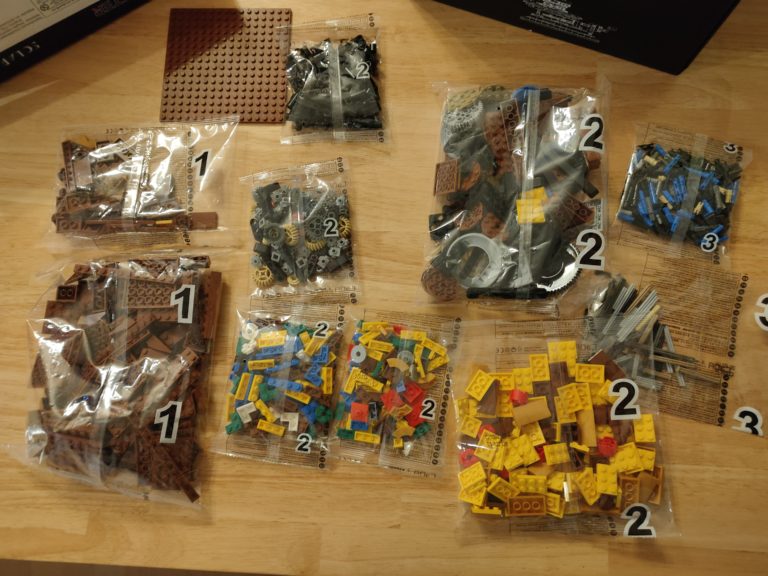
Incidentally, I am referring exclusively to children here; every adult and actually also young people from the age of 14 should have no problems here. But younger people could use help in some places – which is perfectly okay, after all it’s a set that you can build up together and maybe explain one or the other function.
For example, I find the translation of the gears exciting. In the very first step, you build a construction that transmits the movement of a small gear wheel to a large one via additional rods and wheels. It then rotates correspondingly more slowly – you can already learn to understand the underlying principle of the entire construction here.
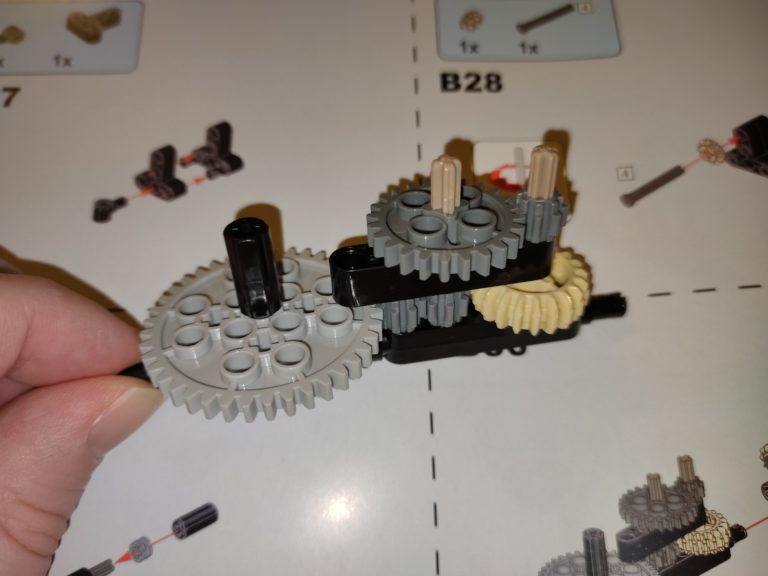
After you have finished building the mechanics, you can try out the system. Even if the planet and star are still missing, you can already see how everything rotates and moves. The last step is to assemble the sun and the earth. Here stones are again placed on top of each other in the classic way, but in a creative way to create the impression of two balls.
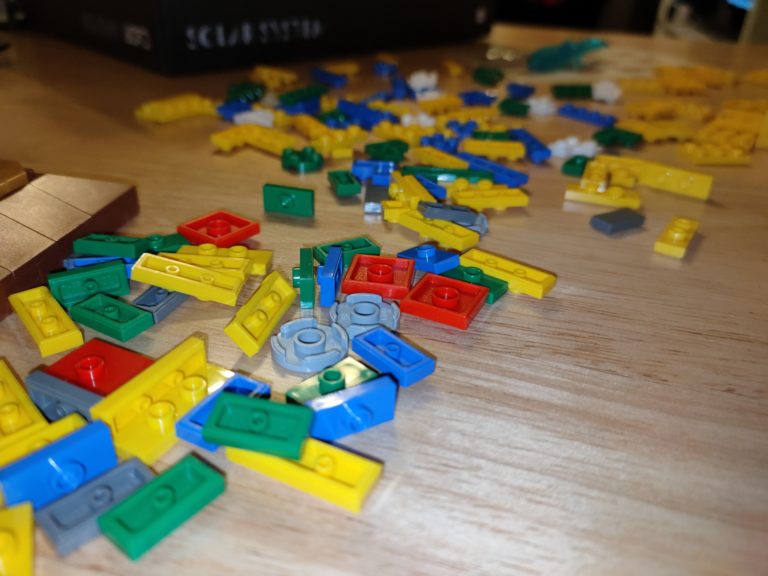
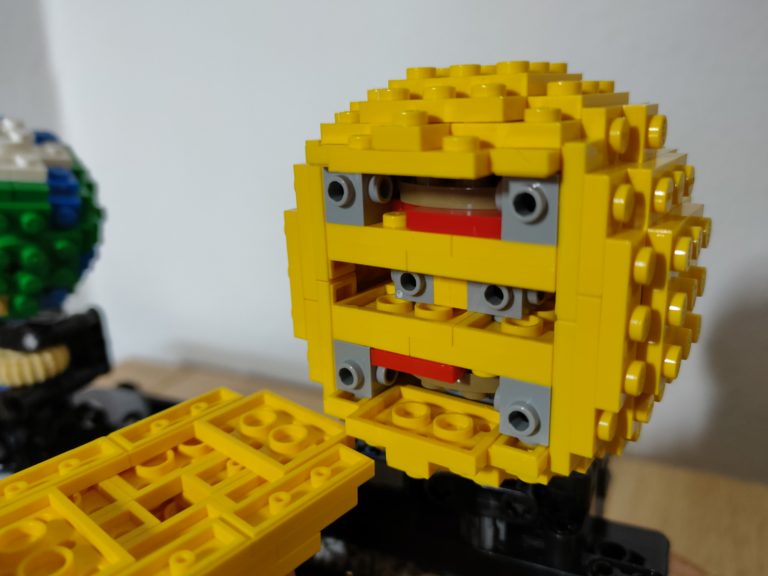
It’s hard for me to give a realistic timeline for construction. It took me less than two hours, but setting it up with children might take a lot longer. Of course, this depends on age and personal abilities (and certainly also on enthusiasm) and can best be assessed by the parents. I have to be honest, I would have liked to have built on it longer because I just had so much fun.
Our solar system as a mini simulation
Once you’ve finished building, you can enjoy a fairly detailed replica of the solar system. Yes, of course the 7 other planets are missing here (sorry Pluto) and you “only” have the system of sun, earth and moon. But it is very close to the original in many respects. A large set with all the planets would certainly be an ambitious project, but it would probably have problems with the balance. I like to be convinced otherwise by a creative designer.
What is true to the original?
If you turn the crank, the entire set moves, ie all elements at the same time. This goes both ways, by the way; Turning back time a few months or years is therefore possible here. We’ve all wished for it before.
First of all, of course, the earth revolves around the sun. However, the blue planet also revolves around itself and is in turn orbited by the moon. A hand points to the current month and rotates with the earth as the year progresses. I have already spoken above about the transmission ratio of the gears. I don’t know how exactly this would be stated here, but with moderately fast rotation of the crank one orbit around the sun takes at least two minutes. You can see it in the linked video above. Just so you have a rough idea of the speed.
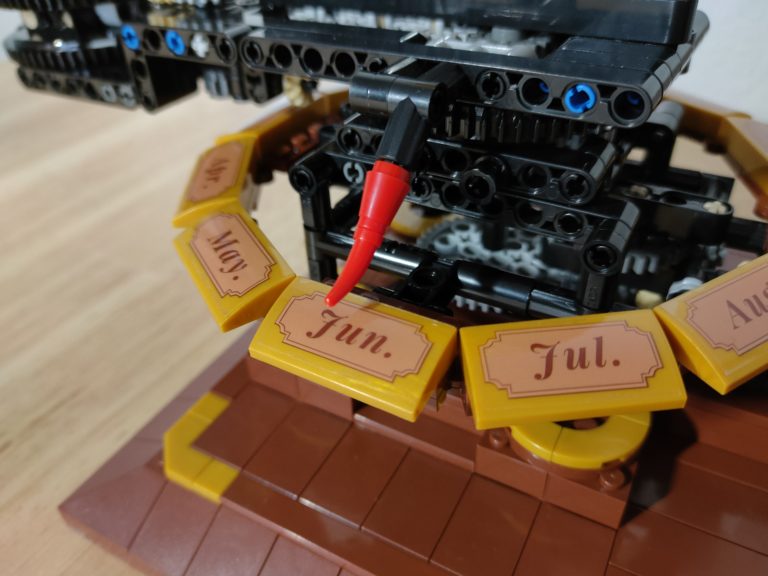
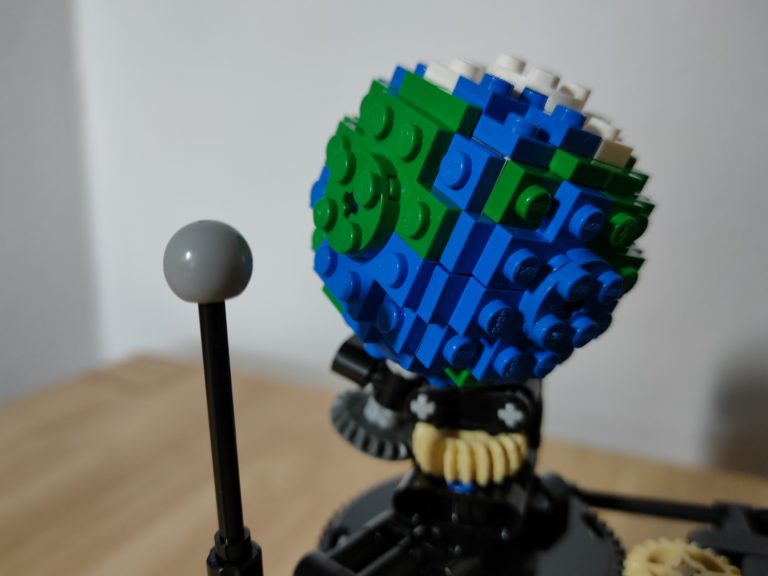
What is particularly fascinating, however, is that the relative time intervals here are approximately correct. Of course, the orbit around the sun takes a “year” or 12 months, which can be easily read off the display. The earth rotates around itself almost exactly 30 times in a month.
The moon completes exactly one orbit of the earth in these 30 “days”. You read that right, the system simulates a year with 360 days or 12 months of 30 days each and realistic phases of the moon. Does anyone else find this as cool as I do? The sun’s own rotation is also approximately correct at just under a “month”.
Another extra: The axis of rotation of the earth is slightly inclined – as in reality – in such a way that in the summer months the northern hemisphere faces the sun. Unlike what was originally seen in CaDA’s video, it maintains its tilt so that the southern hemisphere is closer to the Sun in winter. So we even have realistic seasons here.
Maybe the whole thing is easier to construct than I imagine. Maybe some lucky coincidence will help that this ratio is easy to generate due to the many gears. Nevertheless, I am absolutely fascinated by this attention to detail and would like to express my kudos to the designer JK Brickworks.
Which is not to scale
CADA C71004W / Of course, the dimensions are not true to scale. The earth is much too big here next to the sun, the moon is too small compared to the earth. The spacing is also incorrect. Scientific fun fact: If the sun were as big as here in the model, then a true-to-scale earth would have to be a little over 7 meters away.
It would then only be less than a millimeter in size – you won’t get far with terminal blocks. If you kept the earth this size with a diameter of about 5 cm, the sun would be over 5 meters high and almost 600 meters away – also somehow impractical for the living room.
And in case someone took offense at the above: Yes, a lunar month lasts 28 and not 30 days, the months are actually of different lengths and the model probably doesn’t match the 365 days exactly either (but I didn’t count that exactly either). But come on! This is pretty impressive.
Identifiable Continents
As if that weren’t enough, I would like to point out a small detail that gave me a lot of pleasure during assembly. If you look closely at the earth, you can see that the blue and green stones were not placed randomly here. The continents are – albeit very abstract – clearly recognizable , and not only because of the ice surfaces at the poles. Clever solution, where you could have simply represented a blue ball with a few green spots. That gives bonus points.
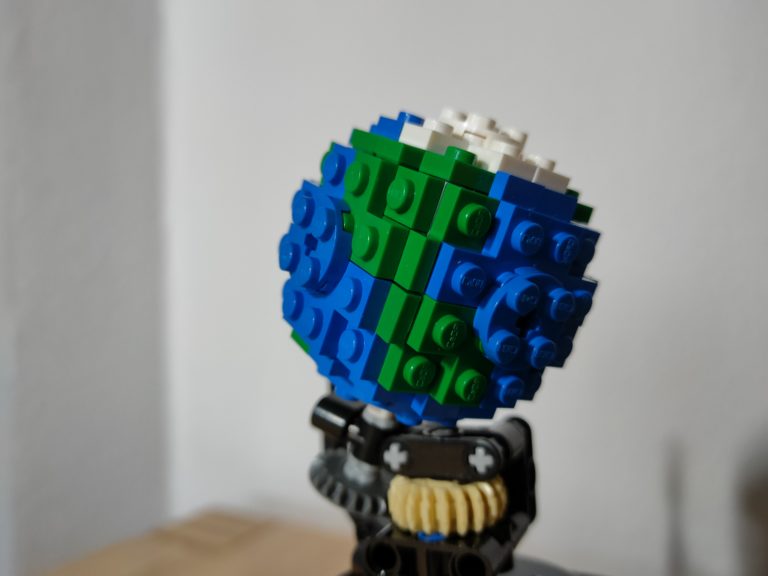
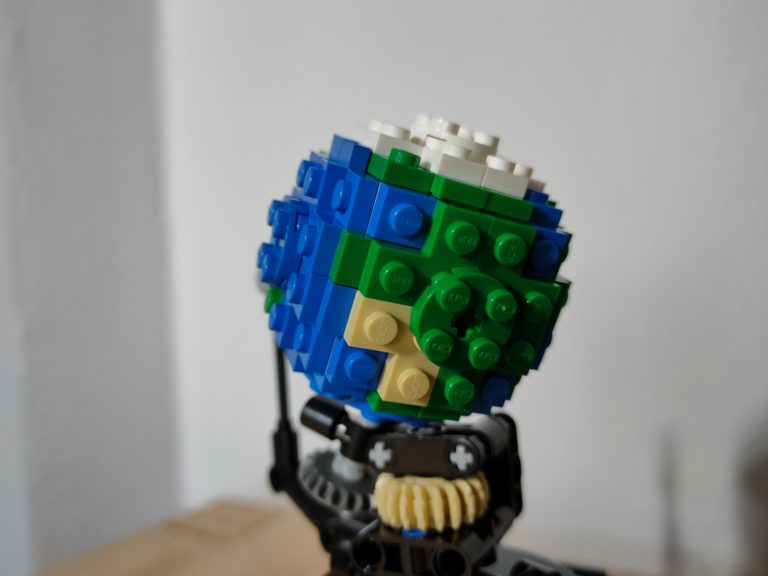
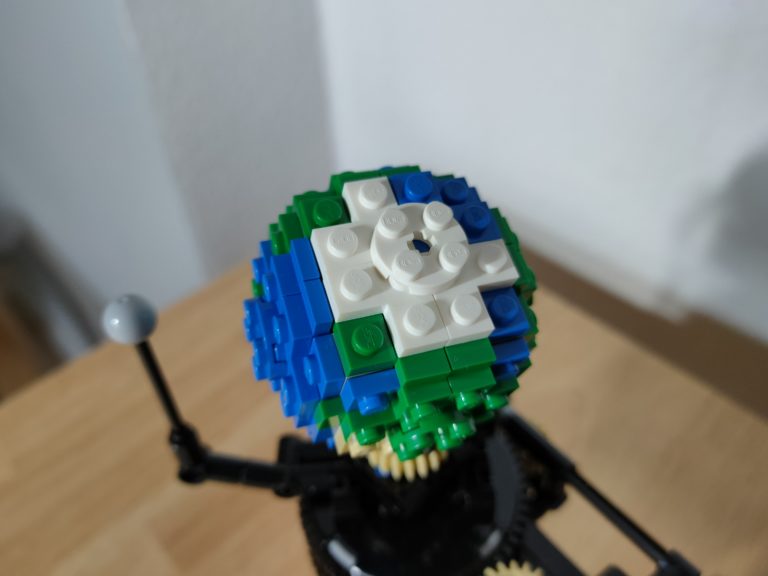
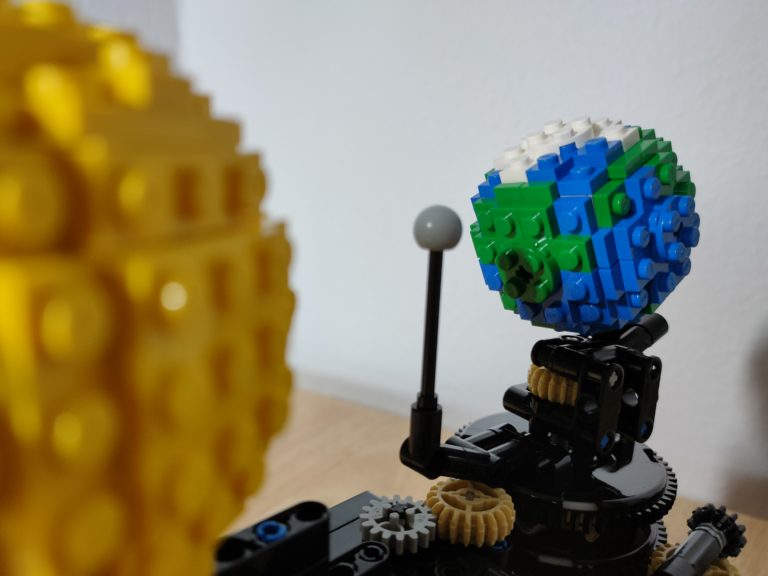
A few minor criticisms
Now that I’ve written extensively about how much I like the set, I don’t want to hide a few points of criticism. On the one hand there is the very sensitive mechanism . Basically, the movement runs “round” (haha), but sometimes there are small jerks because a gear wheel doesn’t seem to grip properly and slips off.
Not really a disadvantage of the set and can usually be fixed by subsequent repairs. In any case, make sure to position all gears exactly, even small deviations can ensure that they do not engage properly. (CADA C71004W)
Also, as you turn the crank, there is constant force on the base that holds it in place. If you turn it for a long time, this socket tends to come loose, so it’s better to put at least one finger on it to hold it in place.
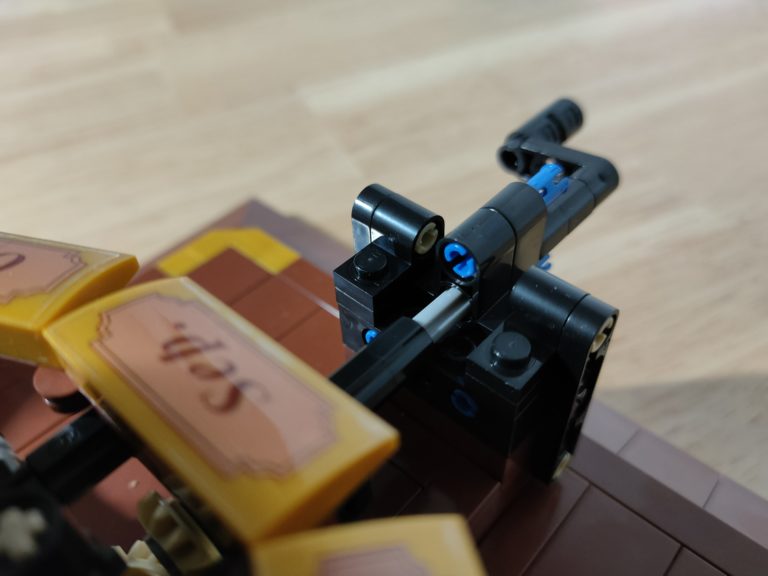
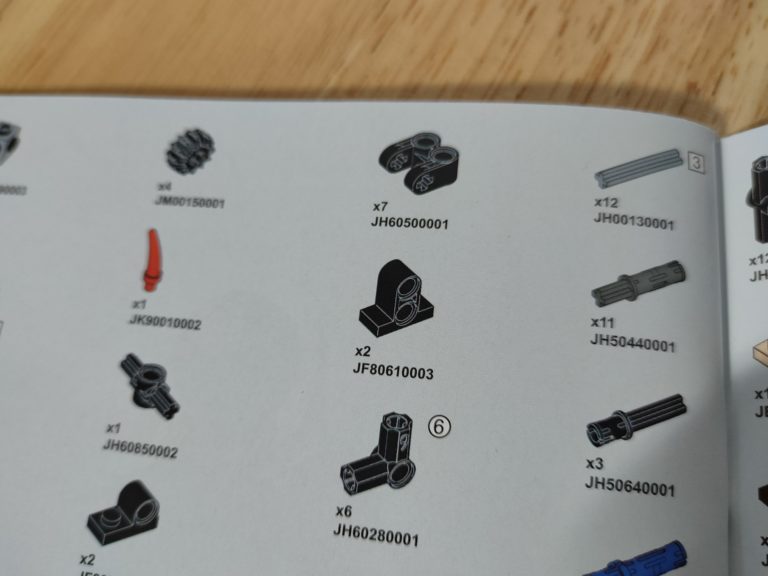
And lastly, I must also state that this set is my first from CaDA, in which a part was actually missing. Luckily it wasn’t an essential one, but of course it’s still annoying. I can’t 100% rule out losing it, but based on the way I emptied the bags of parts, that’s unlikely to have happened. It is one of two equal parts that are placed on the base in front of it as a “guide” for the crank.
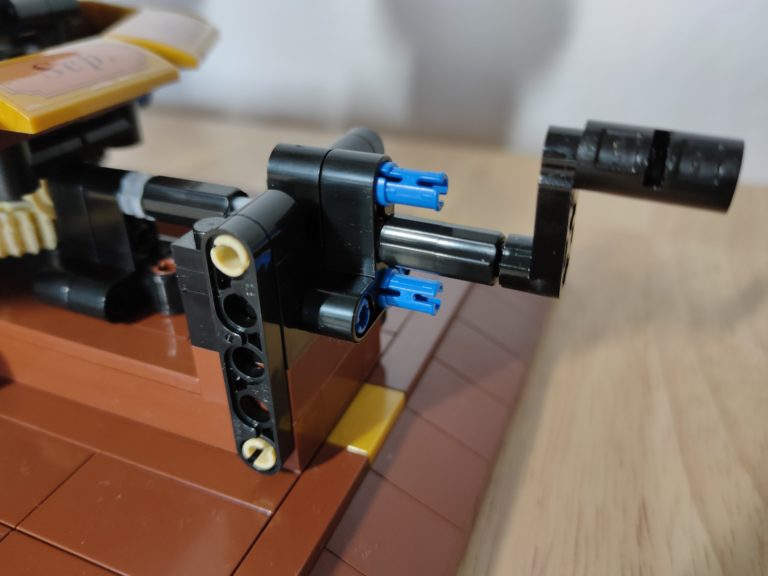
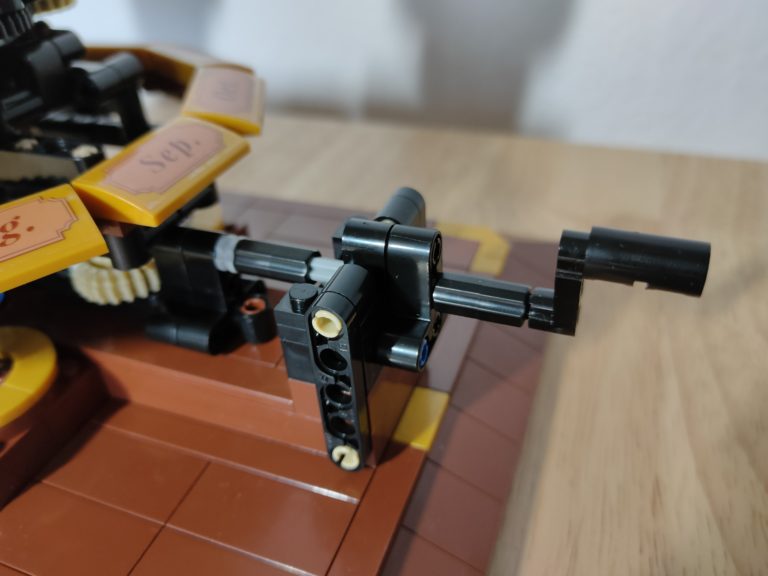
I would also have a suggestion for improvement on the base, because to be honest I don’t understand the two protruding pins here. To me it looks like those are meant to connect a motor. Makes sense and you can certainly do it easily, but since nobody is here, the pins tend to get in the way. Fortunately, even with the excess parts that are included, you can easily replace them with short, black pins. (See the two images above.)
I commit myself: The best set I have ever built
CADA C71004W: Not a set like any other, that’s probably more true here than ever. When do you ever build something comparable to the solar system? With the brown plate, which is of course intended to remind you of a wooden base with gold elements, it is a very nice display piece and also looks very good on the shelf.
Anyone who is enthusiastic about astronomy will also enjoy the set as an adult. The minimum age is 8 years and I also think that especially children will see it as a bit of a science project and will have fun building it – and can even learn something in the process.
Insanely creative, entertaining and also educational – that’s exactly what clamping blocks are supposed to be. Sorry if I’m praising the set a little too much here. It even exceeded my expectations after assembly. Quality, scope and price are also right. If you like clamping blocks (and gears) and are a little enthusiastic about astronomy, you should get this set. Also a great gift idea for children. My very personal opinion: I haven’t – all in all – liked a set better than this one. CADA C71004W Review ..
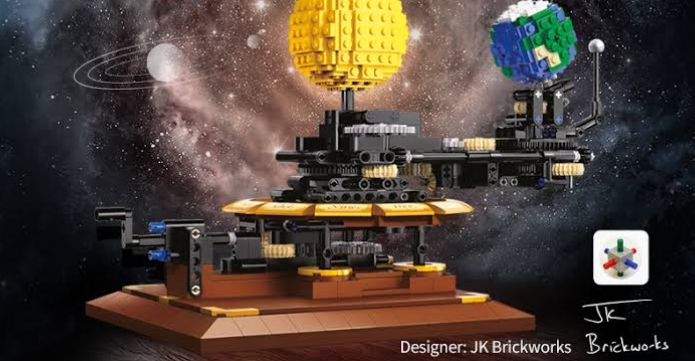
 Number One Boats from USA. Boat Marketplace Group Network. All Boats & Yachts for Sale, Reviews, Specs, Prices, Craigslists.
Number One Boats from USA. Boat Marketplace Group Network. All Boats & Yachts for Sale, Reviews, Specs, Prices, Craigslists. 